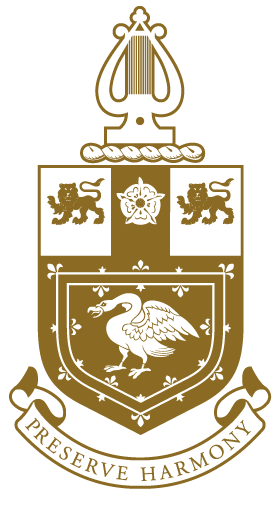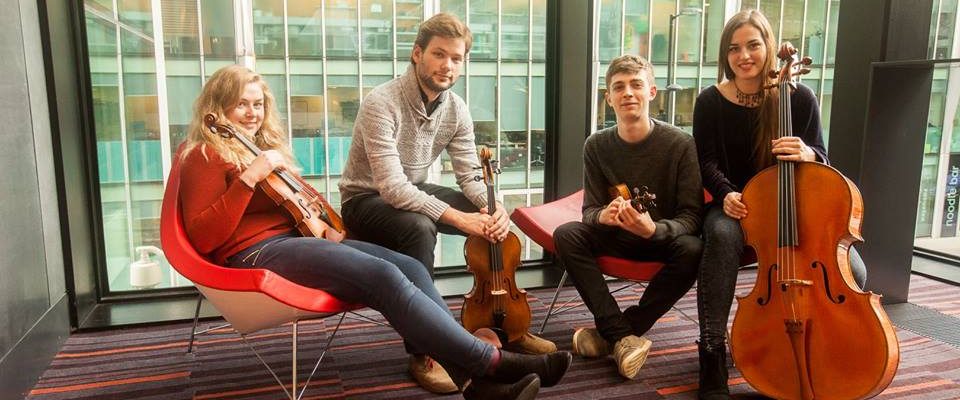Young Artist Interview: Margarita Balanas
Award-winning Latvian concert cellist Margarita Balanas is a member of the Argenta Trio which was recently selected by the Musicians’ Company for a Wigmore Hall recital and Concordia Foundation Artists’ Fund. Away from the trio, members: Margarita, Malgorzata Garstka (piano) and Nicolas Dupont (violin) have active solo careers. This season, Margarita will perform at venues including the Berliner Philharmonie, Laeiszhalle Hamburg, and Southbank Centre on her Charles-Adolphe Gand 1849 cello.
Size or sound. What first attracted you to the cello?
It was the voice that first attracted me, perhaps more like lured me into music. Together with my family I used to sing Rock ’n’ Roll. I started when I was only two years old so I don’t even remember this! When I first heard the cello I loved the range of different sounds that the instrument had. The similarities to the voice always inspire me.
You come from a musical family. Are you competitive or supportive of each other?
My siblings and I are very close and we always support each other. We also perform together quite often as we know one another very well. It definitely feels like there is some telepathy at times!
Tell us about the Argenta Trio – what are the group’s hopes and dreams?
We aim to explore the lesser-known repertoire from our native countries and to work closely with our national composers in order to contribute to the piano trio repertoire and to build bridges between cultures, countries and people. For our upcoming concert on the 7 March at St John’s Smith Square we will be performing youthful masterpieces by Shostakovich and Debussy. We will also perform Peteris Vasks Plainscapes, originally written for choir. I have worked closely with Vasks for several years and so I’m looking forward to sharing our joint vision with the audience.
You’ve performed widely. Do you have a favourite venue?
The Berliner Philharmonie where Kristine and I performed Brahms Double Concerto for the first time would definitely be amongst my favourite picks. The acoustic was magical and the way the audience is positioned around the stage gives a very intimate and unique feeling. Last month my sister and I toured Italy and performed in a number of beautiful theatres in the Le Marche region. Making music in such historically rich venues both inspires and affects your playing enormously. I look forward to returning soon to explore the other regions of Italy.
On that subject, what’s it like travelling with such a big instrument?
Part of me really loves travelling with the cello, he is my partner in crime after all! On a serious note, it can be tough on certain occasions. Train and plane journeys always require that bit of extra attention and care. I definitely think it’s worth the extra effort though and having a shoulder to rest my head on is an added bonus!
Tell us about any projects and repertoire you’re working on
My upcoming projects include participation in Cayman Arts Festival and the Emergents Festival in Barcelona where, together with my sister, I’ll perform with Barcelona Symphony Orchestra and conductor Dalia Stasevska at the L’Auditori de Barcelona. Other projects include performing Philip Glass’s double concerto at the International Cello Festival in Latvia. We are also planning to commission new works for violin and cello in order to enrich the repertoire.
As for lesser known works for the cello, I’ll be performing works by Latvian composer Helmers Pavasars. I am grateful to the City Music Society, Musica Baltica and Leslie East for making this music available for us all.
I’ve been also working on a couple of video projects but I can’t tell you much about this at the moment – it should be exciting!
Briefly, how do you think classical music-making is evolving?
Classical music as a genre is at an interesting point. I’m seeing more and more classical music promoted and shared on social media platforms which I think is definitely a good thing. Some people say that it’s diluting classical music as an art form but perhaps it’s encouraging new listeners. I’m curious to see how this will develop. We may see a countermovement in response to this.
You’ve collaborated widely. How do you find your perfect match?
There are many artists that I love performing with. It’s often quite hard to find the perfect match so to speak. Different people bring different dynamics to the music making. I think it’s important to recognise this and be flexible with your ideas and views. Often the people who challenge you most are the better matches. The main thing for me is the ability to listen and respond.
I hear your cello is something of a celebrity. Tell us more.
I play the Charles Adolphe Gand “Auguste Tolbecque” 1849 cello. This instrument was used by Tolbecque to premiere the Camille Saint-Saëns Cello Concerto No. 1, 146 years ago. The Tel Aviv Museum of Art commissioned a short documentary about the instrument, which was released and presented by them in November 2018.
What are you most looking forward to this year?
Later this year I’ll be traveling to South America and India to perform together with Anne Sophie Mutter and Mutter Virtuosi which will be really exciting. I’ve never been to either place so I’ll make sure to explore as much as possible and get a feel for the cultures.
I will also be holding my first public masterclasses in Europe, UK and the US.
You can find out more about Margarita at www.margaritabalanas.com, Instagram @margaritabalanas, twitter @mbalanas, YouTube channel: https://www.youtube.com/channel/UCultO35gS7Ve3WHFCt2587w
Interview by @suzywillmott





